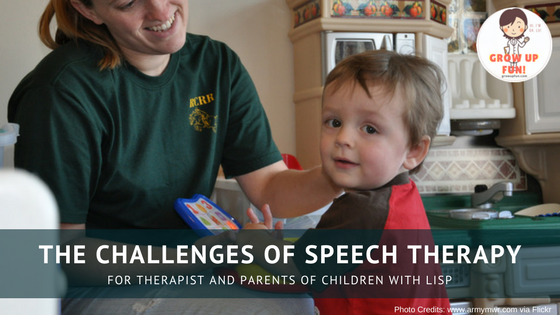There plenty of cases of children with a speech impediment in Canada each year. Most parents get anxious when they find out that their child has difficulty in speaking, particularly Lisp. As a parent, the first thing you would think about is speech intervention to correct lisping. However, depending on the case, speech therapy is not a guaranteed way to correct their impediment.
As a parent of a child with Lisp, I am worried about teasing and bullying among his peers. If it wasn’t so expensive, I would probably get Darren into a speech therapy class. The National Health Service may provide speech and language therapy classes in local communities. However, because of tight resources, the ratio between therapist and cases in the National Health Service is 1:125. The most common challenge for therapists is during initial assessment where they need to determine which children meet their criteria for therapy. To do so, therapists need to pay close attention to the signs and level of speech difficulty for each child.
According to Rhiannan Walton, speech and language therapist, children need to possess at least (3) three processes and a reduced intelligibility to qualify for the speech therapy class. Qualifications are also age-based with the appropriate language and attention skills. As a result, most children with Lisp who have difficulties in pronouncing words with s, z, and /th/ are not being admitted by therapists and are sent for home practice.
That is easier said than done.
Some parents are just hard to reason with. While they only want the best for their children, therapists try to manage a large caseload under limited resources so they have to set priorities. Dyspraxic children, children with autism, and other more serious cases are put first as they need more work and attention. To avoid such conflict, therapists like Walton have noticed the need to spread awareness of the condition and empower parents to support their children with Lisp.
Talk To Your Therapist
An isolated session with your child’s therapist is encouraged. Although a full-time therapy class is not needed, the therapist will help make the parents understand the level of speech condition their child is in. Furthermore, speech exercises appropriate for your child can be given for home therapy.
Empowering Parents
Encouragement and support come from the parents more than anyone else. Therapists encourage us to understand our children better. In a separate article, I have discussed the 5 Tools of Communication that will lead to a better understanding and awareness of any speech or language difficulties our children have. (READ: Understanding Your Child’s Speech and Language Development)
Once we are able to pinpoint the challenges our children are experiencing, we can assess what steps to take to prevent or correct the problem.
Practicing Home-Based Therapy
Intervention can start at home. There are plenty of exercises you can do with your child to correct his/her lisping. You can find resources online, read books on home speech therapy, or get a list from your child’s therapist. If there is no improvement after 6-12 months, talk to your therapist so you can try another option. (Read: Lisp Practice: How to Pronounce Words Clearly)
The journey of your child to speak and interact with everyone around him may be a difficult process for some parents. However, the challenge depends on how much time and effort you spend in understanding your child’s development. Encouragement, support, and simply being there every step of the way is how we show our love to them.
